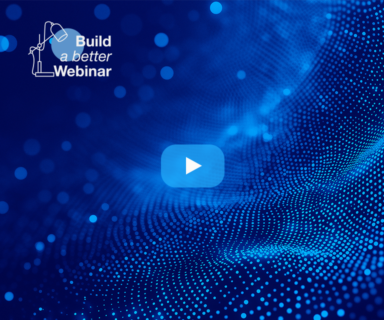I recently attended an excellent breakfast event—hosted by Engagio and RollWorks and featuring TOPO Senior Analyst Eric Wittlake—which provided simple ABM tips, best practices, and real-world examples. This blog outlines the key findings which suggest that the 3 key elements of ABM are Account Selection, Engagement, and Measurement.
The 4 Components of Account Selection
Account Selection has four components: list size, ownership, taking action, and refreshment.
List size
Your ABM list should be determined by your capabilities, though it can be larger than what an SDR team can handle by creating a tiered structure in your account list based on the value of the accounts you seek to engage. With this model, you can increase the size of the list and adjust the amount of resources you dedicate to each tier. For example, lower-tier accounts would receive programmatic ads and other automated messaging that isn’t as resource intense or costly.
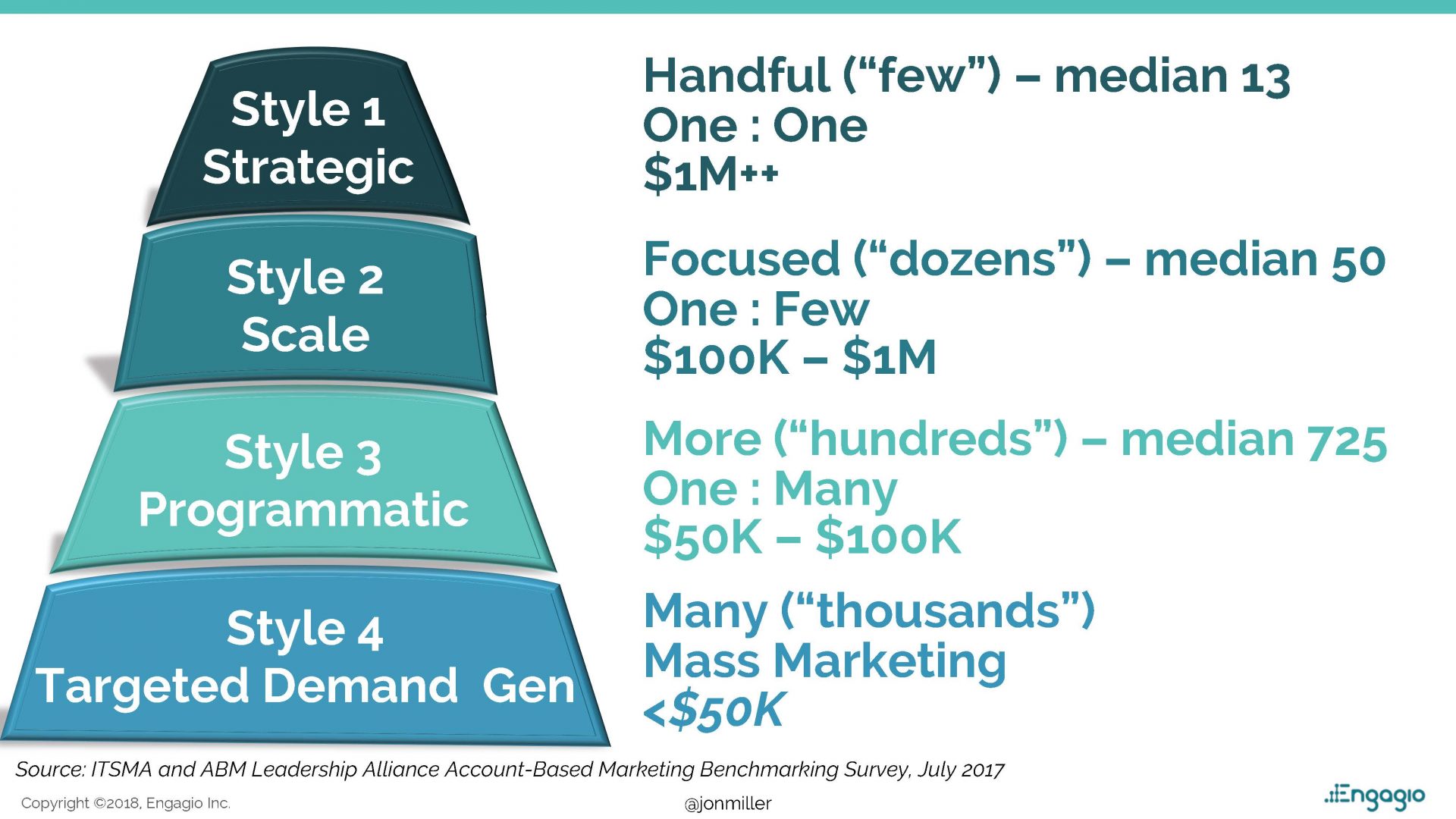
Ownership
According to Jon Miller from Engagio, “Selection should be marketing-driven but sales-owned.” The marketing organization should use their data tools to create the list framework. Then sales can use that framework to confirm the accounts and map their tier structure.
Taking Action
You should segment accounts based on 2 criteria:
- Common features (i.e. vertical)
- Common next steps (i.e. sending a vertical specific asset).
This will allow you to make your engagements scalable and repeatable. According to Wittlake, “No program is cold-to-close.” In other words, in the B2B technology space, we have longer sales cycles and need to focus on moving accounts from one stage of the funnel to the next, not just on “closing” them.
Refreshment
Ideally, you should refresh your ABM account selection every year; however, you should adjust the tier mapping more frequently. For example, if a tier 1 account moves to closed/lost, it might make sense to move that account to a lower tier and in turn move another account up to tier 1. You could keep the new tier structure until a new intent signal emerges indicating that they are in market again.
Engagement – You Need Multiple Tactics to Effectively Engage Accounts
If you’re reading this, you’ve likely seen the MarTech Landscape Supergraphic, and in the world of ABM, there are similar slides, such as Engagio’s ABM Market Map.
TOPO had a version of this which rolled up to the tactical level:
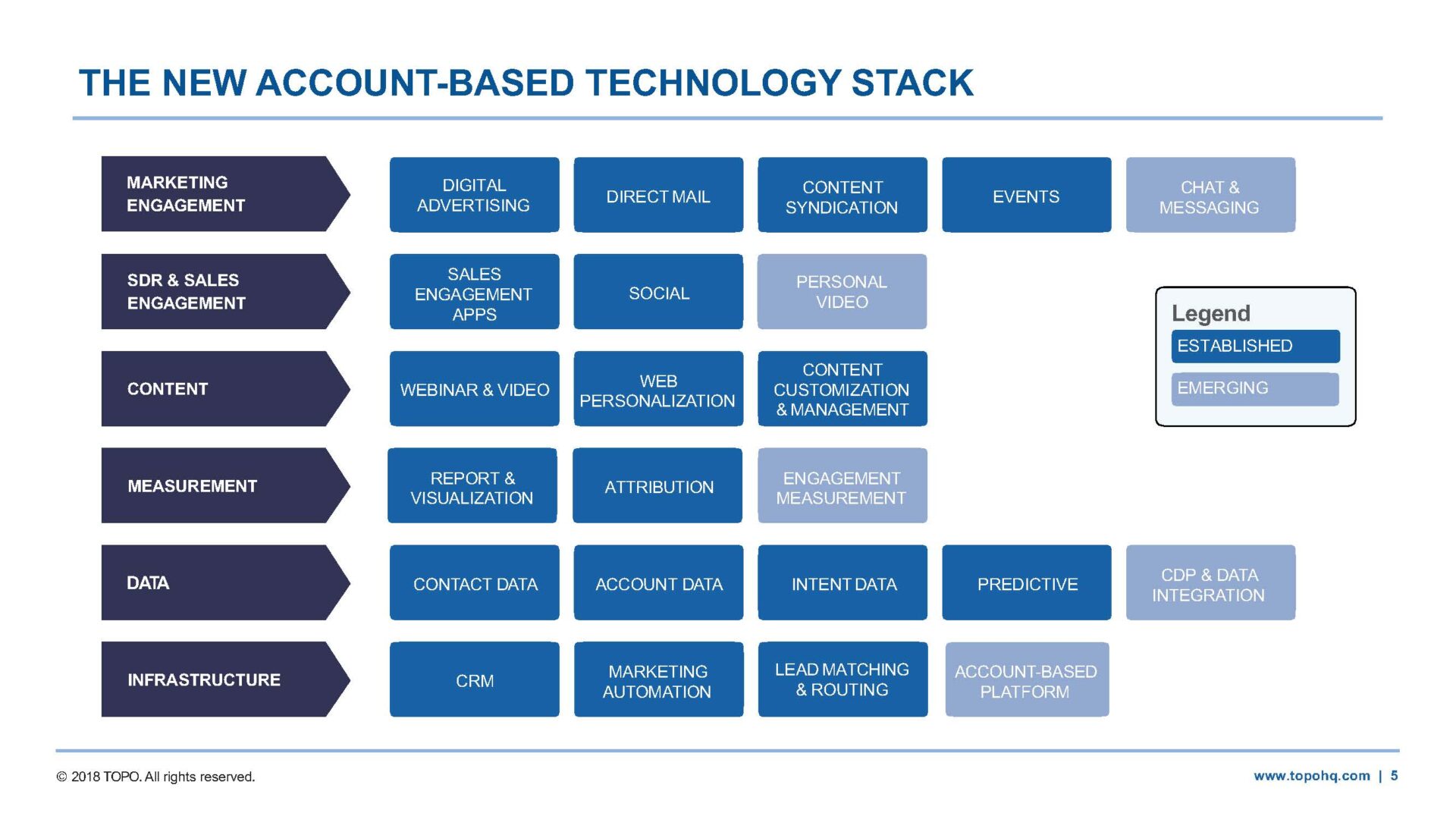
Engagio shared the following slide which illustrated the most effective tactics:
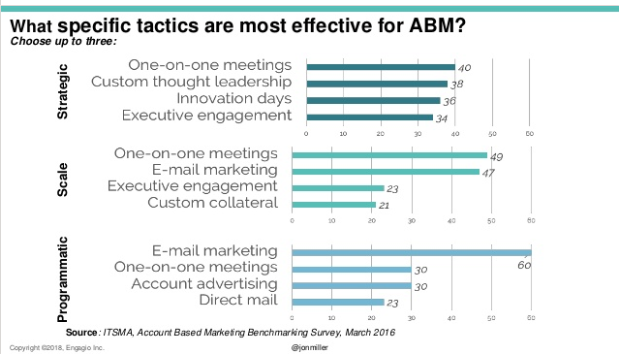
According to Jon Miller, combining tactics results in a 20-30% lift (i.e. using direct mail, retargeting, and email marketing). Similarly, TechTarget has found in their own studies that if you target a specific audience with high-context digital ads and then email that same audience with synchronized messages, recipients are 22% more likely to respond. While 22% was the study average, many saw upwards of 130–140% lift.
Make sure that when implementing an ABM initiative, you considering using multiple tactics to engage accounts. Those tactics should include multiple digital channels, as well as off-line channels.
Measurement – Ween Yourselves Off of Leads and CPL
If you are doing ABM, you need to ween yourself off of just leads and the meaningless metric of CPL. Accounts, not leads, are the appropriate unit. TOPO was able to provide their view on the top 5 ABM metrics, which was very helpful:
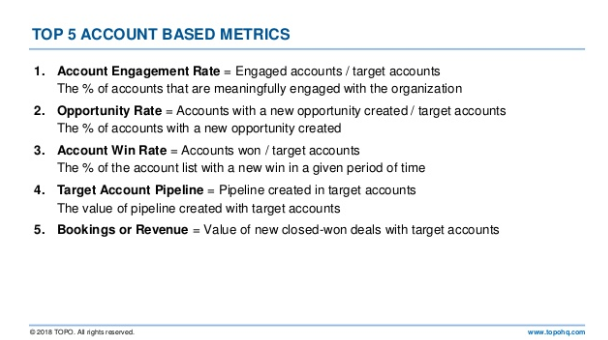
Two other tips that came out of the discussion were:
- Measurement needs to be cross-channel.
- Attribution should be viewed by stages moved, not pipeline. We need to look at how many accounts moved from stage to stage, and then identify WHAT helped moved them.
Hopefully, the takeaways surrounding the 3 ABM elements—account selection, engagement, and measurement—help you simplify and accelerate your ABM effort.
